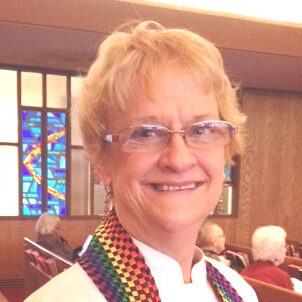Sample Themes for a Generosity Plan
Here are sample themes you could use for a year-round Generosity Plan. You might pick one Scripture as the umbrella theme for the entire year for your congregation’s ministries, or you may just use the quarterly themes. Either way, you can weave in worship and Christian education topics and other dimensions of your ministry. Within each season, you might decide to offer one or more of the following:
* A worship service with that season’s stewardship focus;
* Prayers or reflection pieces in your newsletters or on your church web site;
* A small group, workshop or retreat related to some practical aspect of the stewardship theme: how your church members seek to live it out in their everyday lives; or
* A book study or hands-on outreach event that embodies the learnings from the theme, as part of the congregation’s ministry and mission.
There are many possibilities! Here are a few sample themes to get you going:
“Called to Stewardship:”
You might start with a year-plus focus on the meaning and practice of our United Methodist membership vows. Jim Harnish’s book A Disciple’s Path can give you helpful substance for worship and small group exploration.
* Fall – Prayer
* Winter – Presence
* Spring – Gifts
* Summer – Service
* Fall – Witness
The Cycle of Grace:
The words for these four seasons are taken from Holy Smoke! Whatever Happened to Tithing? by J. Clif Christopher and Herb Mather. As part of your planning, you could choose to offer a small-group study of Holy Smoke during one season, followed by an Experimental Month of Tithing (with Bible texts and reflection questions provided in the book) for those who choose to experience it.
* Winter: Advent-Epiphany – Grace
* Spring: Lent-Easter – Giftedness
* Summer: Early Pentecost – Giving
* Autumn: Late Pentecost/Kingdomtide – Growth
The Great Commandment:
When asked what is the greatest commandment, Jesus answered, “You shall love the Lord your God with all your heart, soul, mind and strength. The second is this: You shall love your neighbor as yourself.” (Mk. 12:28-31) This text lends itself well to four quarters of stewardship focus.
“Heart” in the Old Testament means “bias,” “leaning” or “thrust” of one’s life; we might say our lifestyle or the non-verbal witness of our actions. “Mind” includes both our reason and imagination. “Soul” in the Old Testament is literally “throat” (as in lifebreath), so we could translate it as our very lives. “Strength” refers to our bodies and physical health. It is natural to pair each of these aspects with Jesus’ intertwined second commandment: to love our neighbors as we love ourselves. These seasons could give a great focus for teaching and practicing joyful stewardship in your congregation.
* Winter: Advent-Epiphany – Heart and Neighbor as Self
* Spring: Lent-Easter – Mind and Neighbor / Self
* Summer: Early Pentecost – Soul and Neighbor / Self
* Autumn: Late Pentecost/Kingdomtide – Strength and Neighbor / Self
“Stewardship in Season” (from Radical Gratitude):
* Winter: Advent-Epiphany — “Awakening to God’s Grace”
* Spring: Lent-Easter — “Living Simply in God’s Grace”
* Summer: Early Pentecost — “Helping to Unveil God’s Grace”
* Autumn: Late Pentecost/Kingdomtide — “Sharing God’s Grace”
Written 2/2011
Note: Radical Gratitude is an outstanding e-newsletter and web site resource created by Tanya Barnett and Tom Wilson of the Pacific Northwest United Methodist Foundation. To subscribe or to access their archives (with all three years of the Common Lectionary), go to http://www.umfnw.org. Here is what they say about copying: “All materials in Radical Gratitude were researched and prepared by the PNW Annual Conference’s Stewardship Emphasis staff and advisory group. You are welcome to forward and/or reproduce these materials for church use (please cite Radical Gratitude, http://www.umfnw.org).


